Table of content
Cooking black sticky rice, also known as forbidden rice due to its deep, almost inky hue that was once reserved for royalty, is an art form that combines tradition with culinary precision. This gluten-free grain boasts a rich, nutty flavor and a chewy texture that makes it a delightful addition to various dishes. Whether you’re looking to incorporate it into desserts, savory meals, or simply enjoy it as a standalone side, mastering how to cook black sticky rice can elevate your culinary repertoire. This comprehensive guide will walk you through the process, from selecting the right rice to perfecting your cooking technique, ensuring you achieve the best results every time.
Understanding Black Sticky Rice
Before diving into the cooking process, it’s essential to understand what makes black sticky rice unique. Unlike traditional white or brown rice, black sticky rice (Oryza sativa L. var. glutinosa) is a type of glutinous rice that contains a higher amount of amylopectin, a type of starch that gives it its sticky consistency. Its dark color comes from antioxidants called anthocyanins, which not only add to its visual appeal but also contribute to its health benefits, including potential anti-inflammatory and antioxidant properties.
Selecting the Right Black Sticky Rice
-
Quality Matters: Start by purchasing high-quality black sticky rice. Look for grains that are uniformly dark, with a slight shine, and free from any discoloration or impurities.
-
Freshness Counts: Opt for rice that has been recently packaged, as stale rice can lose its flavor and nutritional value over time.
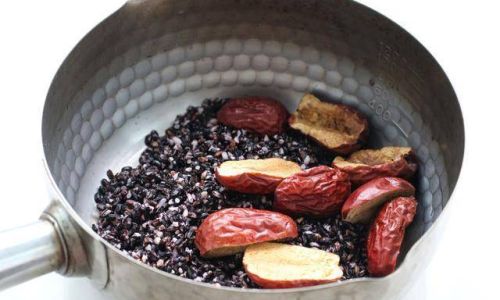
-
Source Considerations: If possible, choose rice that has been organically grown to avoid potential contaminants from pesticides and fertilizers.
Preparation Before Cooking
-
Rinsing: Before cooking, rinse the black sticky rice under cold running water to remove any surface dust or debris. Do not soak it unless a recipe specifically calls for it, as soaking can affect the final texture.
-
Draining: Once rinsed, drain the rice thoroughly using a fine-mesh strainer to ensure no excess water remains. Excess water can alter the cooking process and final consistency.
Cooking Methods
There are several ways to cook black sticky rice, each yielding slightly different results. Here, we’ll explore three popular methods: stovetop, rice cooker, and Instant Pot.
Stovetop Method
Ingredients:
- 1 cup of black sticky rice
- 2 cups of water or a combination of water and coconut milk for a richer flavor
- A pinch of salt (optional)
Instructions:
-
Combine Ingredients: In a medium saucepan with a tight-fitting lid, combine the rinsed rice, water (or water and coconut milk mixture), and salt if using.
-
Bring to a Boil: Place the saucepan over medium-high heat and bring the mixture to a rolling boil. Stir once or twice to prevent sticking.
-
Reduce Heat and Simmer: Once boiling, reduce the heat to the lowest setting possible while maintaining a gentle simmer. Cover the saucepan with the lid and let it simmer undisturbed for about 40-45 minutes, or until the liquid is absorbed and the rice is tender.
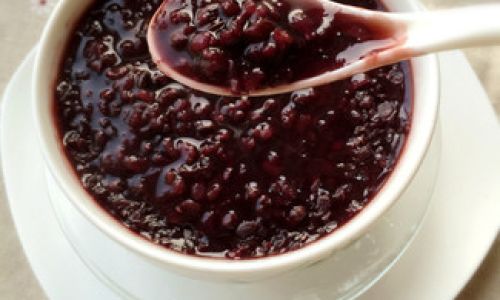
-
Check for Doneness: After the cooking time, remove the saucepan from heat and let it sit, covered, for an additional 10 minutes. This allows the rice to finish absorbing any remaining moisture and develop its sticky texture.
-
Fluff and Serve: Use a fork to gently fluff the rice, separating the grains as much as possible without breaking them. Serve hot or use as needed in your recipes.
Rice Cooker Method
Ingredients:
- 1 cup of black sticky rice
- 5 to 2 cups of water or a combination of water and coconut milk
- A pinch of salt (optional)
Instructions:
-
Measure Ingredients: Measure the rinsed rice and water (or water and coconut milk mixture) accurately.
-
Add to Rice Cooker: Place the rice and liquid into the rice cooker’s inner pot. Add a pinch of salt if desired.
-
Set and Cook: Close the lid securely and set the rice cooker to the ‘white rice’ or ‘standard’ setting. Most rice cookers automatically detect when the rice is done and switch to a keep-warm mode.
-
Fluff and Serve: Once the rice cooker indicates that the cooking cycle is complete, open the lid carefully to avoid steam burns. Use a fork to fluff the rice and serve immediately or keep it on the keep-warm setting until needed.
Instant Pot Method
Ingredients:
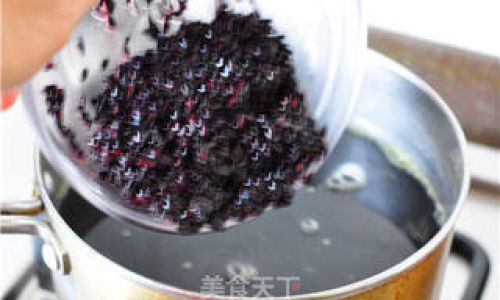
- 1 cup of black sticky rice
- 5 cups of water or a combination of water and coconut milk
- A pinch of salt (optional)
Instructions:
-
Add Ingredients to Pot: Place the rinsed rice and liquid into the Instant Pot’s inner pot. Add a pinch of salt if using.
-
Seal and Set: Secure the lid and ensure the valve is set to ‘sealing.’ Select the ‘manual’ or ‘pressure cook’ setting and adjust the time to 25 minutes.
-
Natural Release: Once the cooking time is up, allow the pressure to release naturally, which can take about 15-20 minutes. This helps the rice to achieve its desired sticky texture.
-
Quick Release (if Necessary): If you’re in a rush, you can perform a quick release of the remaining pressure after the natural release has started but be aware that this might slightly affect the texture.
-
Fluff and Serve: Open the lid carefully and use a fork to fluff the rice. Serve hot or use as needed.
Storage and Reheating
-
Storing: Leftover black sticky rice can be stored in an airtight container in the refrigerator for up to 3 days. For longer storage, freeze it in portions for up to 3 months.
-
Reheating: To reheat, you can steam the rice, microwave it with a splash of water to maintain moisture, or stir-fry it with a bit of oil and your favorite seasonings for a new twist on an old favorite.
Incorporating Black Sticky Rice into Dishes
Black sticky rice’s versatility allows it to be used in a wide range of dishes. Here are a few ideas to inspire your culinary creativity:
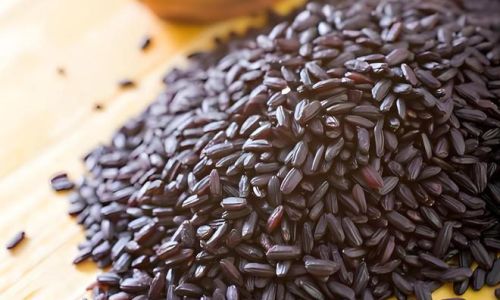
-
Desserts: Make a decadent black sticky rice pudding with coconut milk and a hint of vanilla. Top with fresh mango or tropical fruits for a tropical twist.
-
Savory Dishes: Incorporate it into stir-fries, salads, or even use it as a base for sushi rolls for a unique presentation.
-
Breakfast Bowls: Create a nutritious breakfast bowl with black sticky rice, topped with avocado, a poached egg, and a drizzle of soy sauce or tahini dressing.
-
Drinks: Blend cooked black sticky rice with coconut milk and ice for a creamy, refreshing smoothie.
Conclusion
Cooking black sticky rice may seem like a simple task, but achieving perfect results requires attention to detail and an understanding of the grain’s unique properties. By following the guidelines outlined in this guide, you’ll be able to cook black sticky rice that is tender, sticky, and bursting with flavor. Whether you’re a seasoned chef or a home cook looking to expand your repertoire, mastering the art of cooking black sticky rice will undoubtedly enrich your culinary journey. Happy cooking!
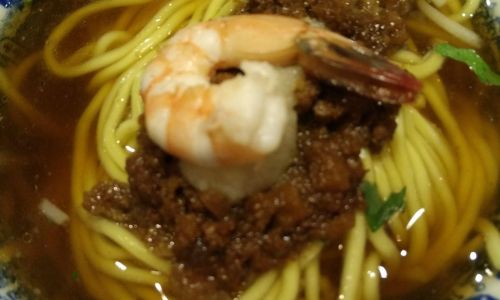
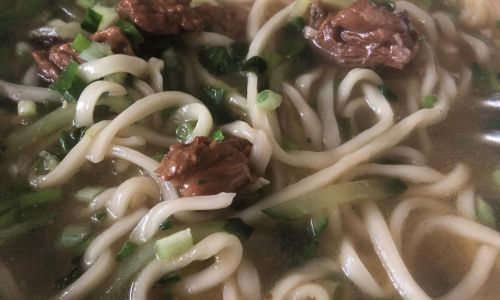
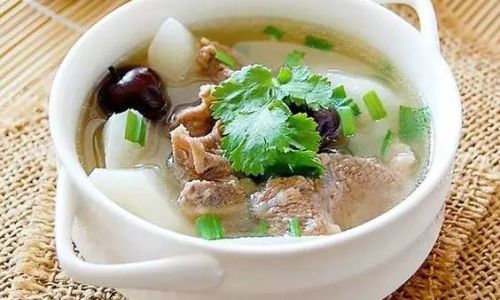
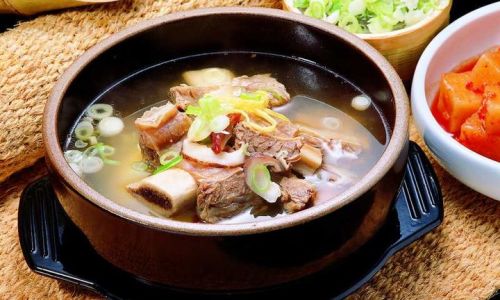
0 comments